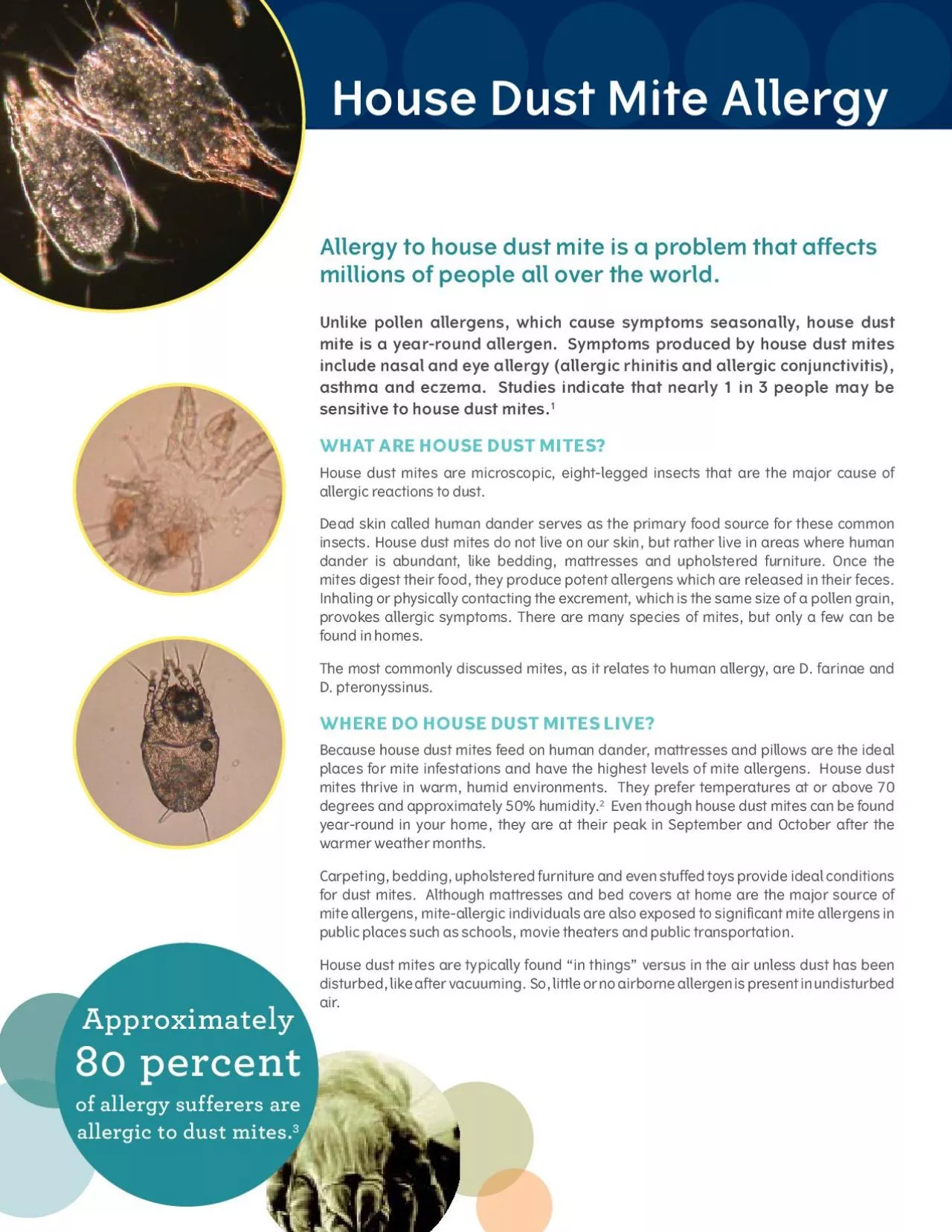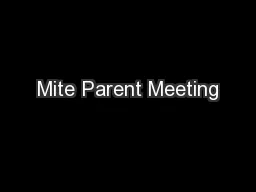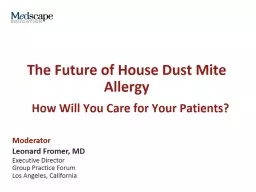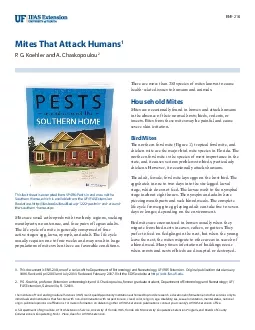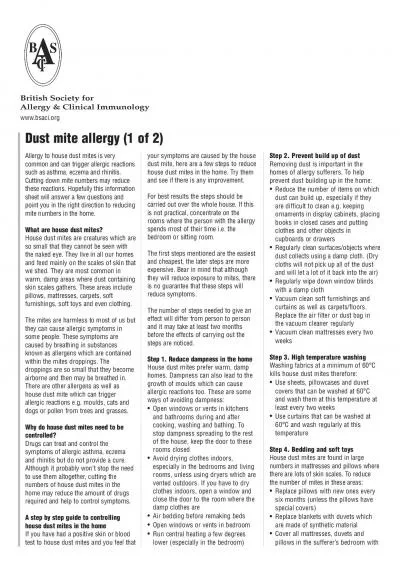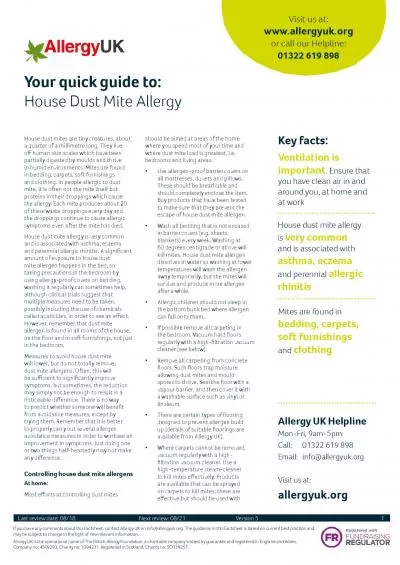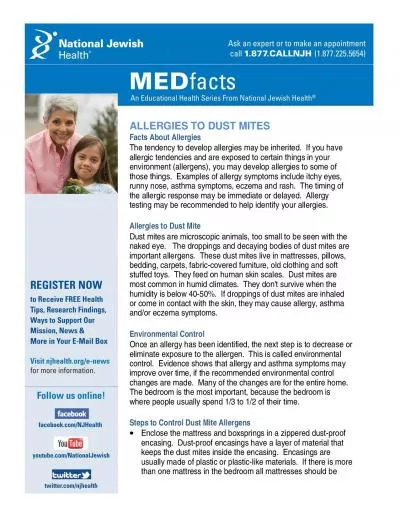PDF-Allergy to house dust mite is a problem that affects millions of peopl
Author : emily | Published Date : 2022-09-06
House Dust Mite Allergy Approximately80 percentof allergy sufferers are allergic to dust mites DIAGNOSING MITE ALLERGYIf an allergy to dust mite is suspected the
Presentation Embed Code
Download Presentation
Download Presentation The PPT/PDF document "Allergy to house dust mite is a problem ..." is the property of its rightful owner. Permission is granted to download and print the materials on this website for personal, non-commercial use only, and to display it on your personal computer provided you do not modify the materials and that you retain all copyright notices contained in the materials. By downloading content from our website, you accept the terms of this agreement.
Allergy to house dust mite is a problem that affects millions of peopl: Transcript
Download Rules Of Document
"Allergy to house dust mite is a problem that affects millions of peopl"The content belongs to its owner. You may download and print it for personal use, without modification, and keep all copyright notices. By downloading, you agree to these terms.
Related Documents

